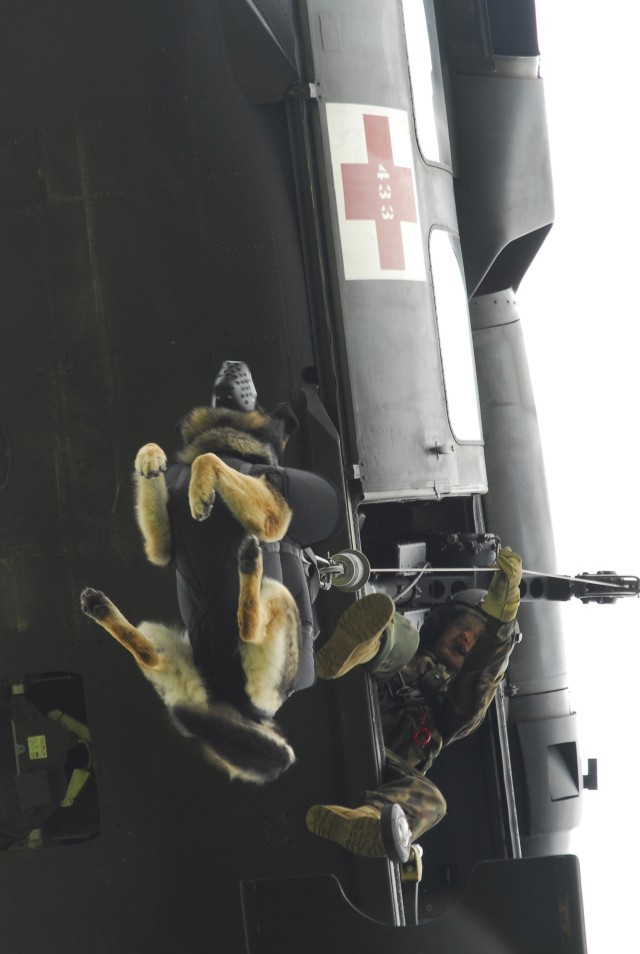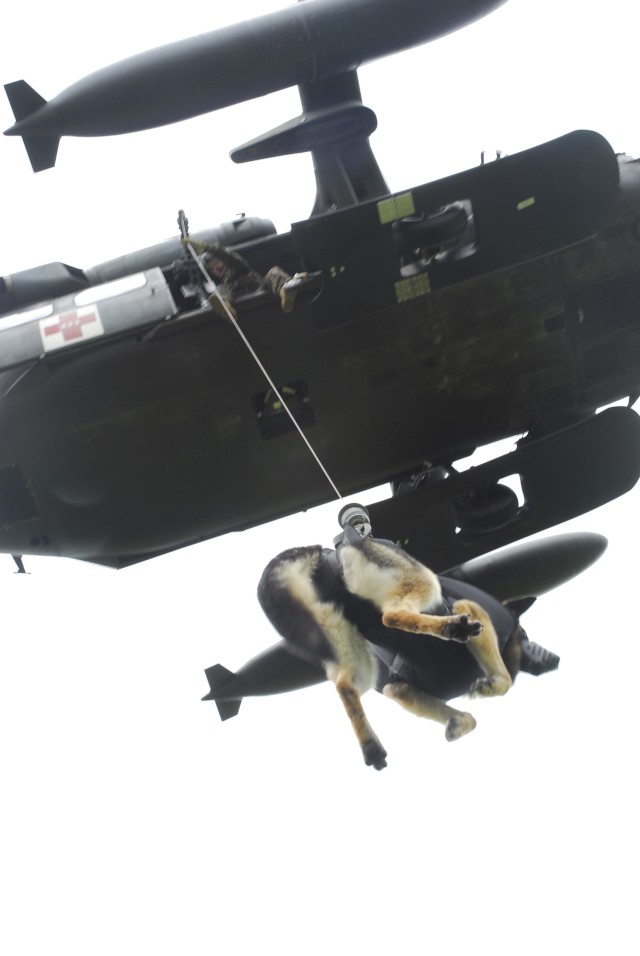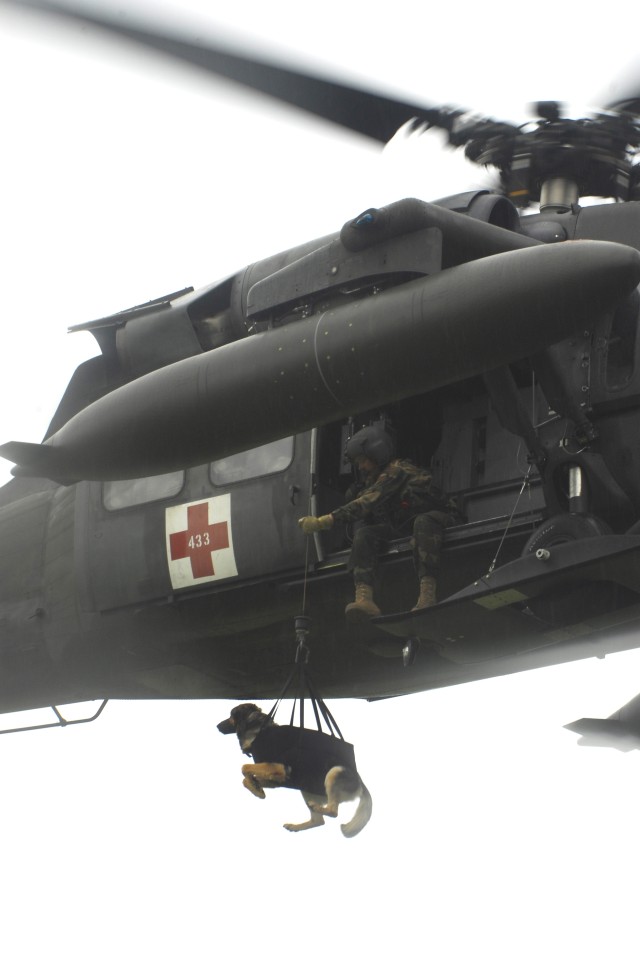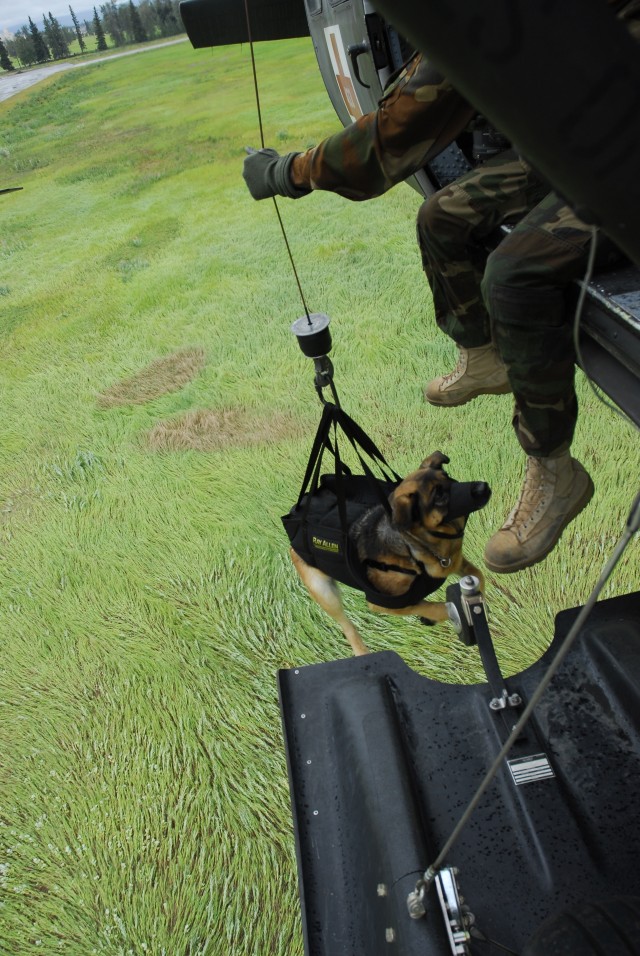FORT WAINWRIGHT, ALASKA (U.S. Army, Alaska, Aug. 7, 2007) - "Medical evacuation air-extraction training was a pretty hard thing to ask Cezar to do, but it's not the hardest," said Spc. Jon Waggoner, referring to his military working dog. "When Cezar and I were in Iraq, we had a two-week period where our vehicle got hit by five IEDs. Me expecting Cezar to still work after an IED strike is about the hardest thing I've asked of him, let alone doing it five times in two weeks. But he did it, and we made it back alive," noted the crew chief with the 52nd Aviation Regiment (Air Ambulance).
This was the first time Spc. Waggoner and Cezar participated in this type of training, held here at Ladd Army Airfield, July 23, along with other Army and Air Force military working dogs. As part of deployment readiness training, the dogs and their handlers were hoisted into an Army UH-60 Black Hawk medical evacuation helicopter that hovered about 50 feet overhead.
It works like this: The Black Hawk crew approaches the site and lowers a crew chief to the ground using a hoist called a "jungle penetrator." The dog handler is then hoisted up to the aircraft while another handler waits with the dog. Next, the dog is attached to the hoist in a special harness and raised to the helicopter. In combat, the hoist would be used during a medical emergency when a helicopter cannot land to pick up the teams. The training allows the dogs to become comfortable with the procedure.
"It is definitely something that opens your eyes as to how your dog will react if it was real," said Sgt. Matthew Wilkinson, a 28th Military Police Detachment dog handler. "It's better to do this now, here, than try to do it in a combat zone for the first time."
"Our military working dogs are essential to our success in the war in Iraq and Afghanistan," said Alaska District Veterinary Commander, Maj. Heather Serwon. "The dogs can detect more than 50 types of explosive devices and ammunitions in one day that could be used against servicemembers and local civilians. Ensuring our military working dogs, when injured, are medically evacuated in a timely manner allows us as veterinarians to provide them with the best surgical and medical care that may make the difference in saving their lives as they have done so many times for ours."
And just how well did Spc. Waggoner and Cezar do in the training'
"My dog was really spooked by the harness and all the noises going on around us," said Spc. Waggoner. "He still did what I asked him to do, because I was there to keep him calm, and let him know that it was okay. All of the dog's feelings go up the leash to the handler, and all of the handler's feeling go down leash to the dog. So if the handler stays calm it will help the dog stay calm.
"Some of the dogs showed no signs of being nervous or afraid. However, others had obvious signs of fear; shaking and not wanting to wander from their handler," he continued. "But even these dogs showed extreme loyalty, trust and faith to their handlers - none refused to be hoisted or panicked during the training."










Social Sharing